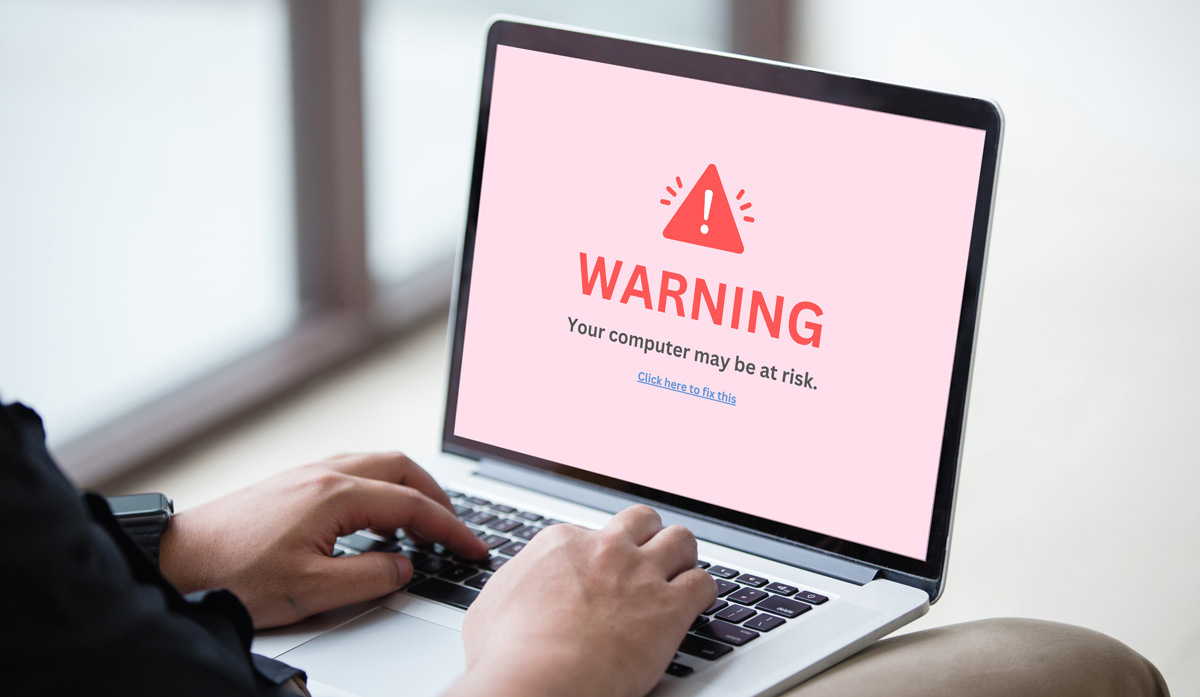Introduction
In today’s digital era, scams and fraudulent lines of action seem to be thriving, taking on new and improved forms, exploiting users’ concerns and fears on technology. The fraudulent pop-up message ‘Your Computer May be at Risk’ is one such rising scam that appears on your computer screen alerting you of security threats present and demanding actions to be taken urgently. Usually, these messages are delivered as part of a scam related to tech support. The motive of threat actors is either monetary gain by making users pay for some service or planting malware on victims’ devices. This article explores how this scam works and provides guidelines on protecting yourself from it.
The Anatomy of the Scam
The ‘Your Computer May Be at Risk’ scam normally starts with an urgent-looking pop-up message declaring that your computer is infected with viruses, malware, or other security threats. The message typically compels you to call a toll-free number or click on a link for immediate support to fix the threat. Attackers carrying out the scam exploit the fear of users to create a sense of urgency expecting the victims to act impulsively.
Victimized users calling the number or following the link are connected with a fake tech support agent who claims to be from a reputable company, such as Microsoft or Apple. The agent will further try to stress the degree of risk of the situation and offer to resolve the issue by accessing the user’s computer remotely. When it reaches this point, the scam may follow one of the below courses:
- Charging for Fake Services: The scammer may convince you to pay for unnecessary software, services, or subscriptions to “fix” the non-existent problems.
- Installing Malware: In some cases, the scammer might ask you to download and install software that is actually malware, giving them unauthorized access to your personal information and sensitive data.
- Identity Theft: The scammer might use the opportunity to gather personal information, such as credit card details, passwords, and more, which can lead to identity theft and financial loss.
Securing Yourself from the Scam
Below are some proactive measures to be followed to protect yourself from the ‘Your Computer May Be at Risk’ scam:
- Remain calm: Remember that legitimate companies will never display alarming pop-ups demanding immediate action. Stay calm and avoid making hasty decisions.
- Never Share Personal Information: Legitimate tech support agents will never ask for your passwords, credit card numbers, or any other personal information over the phone or online.
- Verify the Source: If you’re uncertain about the authenticity of a pop-up message, independently look up the official customer support number of the company in question and contact them directly.
- Use Reliable Security Software: Install reputable antivirus and anti-malware software on your computer to help prevent and detect potential threats.
- Enable Pop-Up Blockers: Configure your web browser to block pop-ups, reducing the likelihood of encountering such scam messages.
- Educate Yourself and Others: Spread awareness about these scams to friends and family, especially those who might be less familiar with technology-related frauds.
Cleaning the Popup messages
Follow the link below for instructions to remove unwanted ads. This is just one of the many articles available on the web to help clean up the situation. You can discover and read more about resolving the ‘Your Computer May be at Risk’ popup.
https://support.google.com/chrome/answer/2765944?hl=en&co=GENIE.Platform%3DDesktop
Conclusion
The “Your Computer May Be at Risk” scam preys on people’s fears of cyber threats and their lack of technical knowledge. By staying informed and following best practices for online security, you can protect yourself from falling victim to such scams. Remember that legitimate tech support will never use fear tactics or demand immediate payment, and if something seems suspicious, take the time to independently verify the situation before taking any action.






